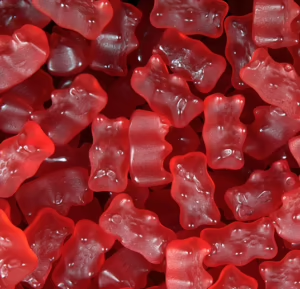
The FDA Bans Red Dye #3: What You Need to Know About Artificial Food Dyes and Mental Health Risks
In a move that has caught the attention of health-conscious consumers, the FDA recently announced the ban of Red Dye #3, a commonly used artificial food coloring. While food dyes have long been a point of contention in the world of food safety, the decision to ban Red Dye #3 reflects growing concern over the potential health risks posed by these chemicals—particularly in relation to mental health.
Let’s dive into why this ban matters and what you need to know about the connection between artificial food dyes and mental well-being.
The Mental Health Risks of Artificial Food Dyes
For years, researchers have been investigating the potential link between artificial food dyes and various mental health issues. Red Dye #3, along with other synthetic colors, has been associated with a range of behavioral and cognitive problems, especially in children. While studies have shown mixed results, there is enough evidence to raise alarm about the impact of these chemicals on mental health.
Research has connected artificial food dyes to hyperactivity, ADHD, anxiety, and depression. These dyes can alter the brain’s chemical balance, potentially exacerbating mood disorders and behavior problems. This is especially concerning for children, whose brains are still developing and may be more sensitive to these additives.
Neurotransmitter Disruption: How Food Dyes Affect Your Brain
One of the primary concerns about artificial food dyes like Red Dye #3 is their potential to disrupt neurotransmitter function in the brain. Neurotransmitters are chemicals that help transmit signals in the brain and regulate mood, behavior, and cognitive function. Two key neurotransmitters affected by artificial food dyes are serotonin and dopamine:
- Serotonin: Known as the “feel-good” neurotransmitter, serotonin plays a major role in regulating mood, sleep, and anxiety levels. Disruptions to serotonin levels are strongly linked to depression and anxiety disorders.
- Dopamine: Often referred to as the “pleasure chemical,” dopamine is involved in the brain’s reward system. It helps regulate feelings of pleasure, motivation, and focus. When dopamine levels are disrupted, it can contribute to mood swings, lack of motivation, and problems with focus, making it particularly concerning for individuals with ADHD.
Inflammation and Oxidative Stress: Further Mental Health Implications
Beyond neurotransmitter disruption, some studies suggest that artificial food dyes may trigger inflammation and oxidative stress in the body. Both of these factors are associated with a variety of mental health conditions, including:
- ADHD
- Depression
- Anxiety disorders
- Mood disorders
Chronic inflammation and oxidative stress have been shown to contribute to the development and progression of these disorders, compounding the negative effects of artificial food dyes on mental well-being.
Vulnerable Populations: Why Children Are at Greater Risk
Certain groups are more vulnerable to the harmful effects of artificial food dyes, particularly children and adolescents. Research has shown that children who already suffer from ADHD, depression, or anxiety may experience worsened symptoms when exposed to food dyes like Red Dye #3. This can include:
- Increased hyperactivity
- Greater impulsivity
- Worsened mood instability
For these children, reducing or eliminating artificial food dyes from their diet may help improve their symptoms and overall quality of life.
The Need for Better Regulation and Labeling
Despite the growing evidence of the dangers of artificial food dyes, regulatory oversight remains limited in many countries. In the United States, for example, food manufacturers may still use multiple artificial dyes in a single product, making it difficult for consumers to avoid them entirely. As a result, there is an urgent need for better food labeling and transparency.
Improved labeling would allow consumers to make more informed choices about what they are feeding themselves and their families. If food manufacturers were required to disclose the presence of artificial food dyes more clearly, it would empower individuals to avoid potentially harmful additives.
Making Informed Choices for Better Mental Health
The good news is that there are simple, proactive steps you can take to reduce your exposure to harmful food dyes. Minimally processed foods, such as fruits, vegetables, whole grains, and lean proteins, are typically free from artificial additives, making them a great choice for supporting both physical and mental health.
Opting for whole foods over processed or packaged foods is one of the most effective ways to reduce your intake of artificial dyes. When choosing beverages or snacks, look for products that are free from artificial colors and preservatives. Many natural alternatives to food dyes—such as beet juice, turmeric, or spinach powder—are available and offer a much healthier option.
Seeking Support: Addressing Mental Health with a Holistic Approach
If you or a loved one are struggling with symptoms of anxiety, depression, or ADHD, it’s important to seek support from qualified health professionals. Along with therapy, medication, and other treatments, lifestyle changes—including diet—can play a crucial role in managing and alleviating mental health symptoms.
Adopting a diet that’s rich in whole foods and free from artificial additives is an important part of maintaining mental well-being. Supporting mental health with proper nutrition and self-care strategies can complement traditional treatments and improve overall quality of life.
Foods That Contain Red Dye #3: What to Watch Out For
For those who are concerned about the impact of Red Dye #3, it’s helpful to know which foods typically contain this artificial color. Some common foods and beverages that may contain Red Dye #3 include:
- Candy (especially seasonal candies like candy corn or dyed marshmallows)
- Cakes and cupcakes
- Frozen desserts (like ice pops and strawberry-flavored ice creams)
- Frostings
- Maraschino cherries
- Fruit cocktails
- Colored beverages
- Protein shakes
- Vegetarian meats
- Bacon bits
- Sausages
- Strawberry milk
- Puddings
By being vigilant about food labels and making smarter food choices, you can reduce your exposure to these dyes and support both physical and mental health.
Conclusion: The Case for Natural, Whole Foods
While artificial food dyes like Red Dye #3 may add vibrant colors to processed foods, their potential risks—particularly in relation to mental health—cannot be ignored. By advocating for better regulation and transparency in food labeling, consumers can make more informed choices for themselves and their families. Opting for natural, whole foods that are minimally processed not only supports your physical health but is also essential for mental well-being in the long run.
If you’re ready to make a change, start by swapping out processed foods for natural alternatives. Your mind—and your body—will thank you.

